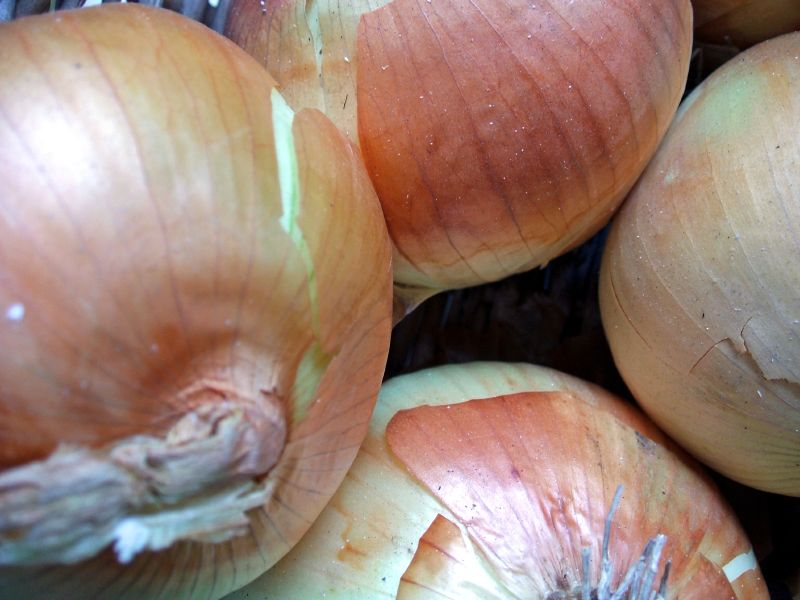Onion Info - Tips For Growing Big Onions


According to most onion info, the number of leaves the plant produces before the days get shorter determines the size of the onion. Therefore, the earlier you plant the seed (or plants), the bigger the onions you will grow. If your onions won't grow big, keep reading for more onion facts that can help you fix that.
Facts About Onions
Onions are good for us. They are high in energy and water content. They are low in calories. Onions increase circulation, lower blood pressure, and prevent blood clotting. The list of onion facts can go on and on; however, one of the most important facts about onions is how to grow them.
Growing Onion Info
Onions can be grown from seeds, sets, or plants. Seeds develop in summer once flowers cease blooming. Seeds can be sown directly in the garden in very early spring, with onion plants ready for harvest by late summer/early fall. Onion sets, which are grown from the previous year's seed, are usually about the size of marbles when harvested and stored until the following spring, when they can be planted. Onion plants are also started from seed but are only about the size of a pencil when they are pulled, at which point, the onion plants are sold to gardeners. Sets and plants are generally the most popular methods of growing onions. Common onion info tells us that it is often easier growing big onions from plants than from seed.
Help, My Onions Won't Grow Big - Growing Big Onions
It is just one of those onion facts that the key to growing big onions is early planting, with fertilizer or compost. Seeds can also be sown in trays and left in a cool location until the seedlings reach about 1-2 inches (2.5-5 cm.) tall, at which time they can be placed in deep biodegradable pots filled with loose, composted soil. Place seedlings at the top and keep pots somewhat dry to encourage more extensive rooting as they move down in search of moisture. Plant the pots in the garden in early spring, and as they absorb moisture from the soil, they will eventually decompose, encouraging a secondary root system near the soil surface, which will produce larger onions. Onion sets and onion plants require loose soil and should be planted early (end of February or March). Dig a shallow trench, working in compost or fertilizer for big onions. Likewise, raised beds can be implemented. Plant the onions about an inch deep and 4-5 inches (10-12.5 cm.) apart. Wider spacing makes it easier to control weeds, which can compete for nutrients. Keep the area weed free; otherwise, the onions won't grow big. Once onion bulbs begin to swell (in late spring), ensure that they remain above ground. Onion plants will continue to increase in size until the middle of summer, at which time their tops begin to fade. Once these tops have completely faded and fallen over, onion plants can be pulled and left in the sun to dry for several days before storing in a cool, dry area. Growing onions doesn't have to be frustrating. Start them early, follow the above big onion facts and remember to add compost or fertilizer for big onions.
Gardening tips, videos, info and more delivered right to your inbox!
Sign up for the Gardening Know How newsletter today and receive a free copy of our e-book "How to Grow Delicious Tomatoes".

Nikki Tilley has been gardening for nearly three decades. The former Senior Editor and Archivist of Gardening Know How, Nikki has also authored six gardening books.
-
 Looking For Plants To Give You The Soft And Fuzzies? Try These 5 Fuzzy Leaf Plant Options
Looking For Plants To Give You The Soft And Fuzzies? Try These 5 Fuzzy Leaf Plant OptionsLovers of texture, drama, silver foliage and tactile plants will adore these special sensory garden additions. These fuzzy leaf plant options will leave you all aglow
By Susan Albert
-
 Get Ready For A Summer Of Hummers! Grow These Full Sun Hummingbird Plants and Flowers
Get Ready For A Summer Of Hummers! Grow These Full Sun Hummingbird Plants and FlowersIf you’re lucky enough to enjoy a sunny backyard, make sure you are maxing out on your pollinator opportunities and grow these full sun hummingbird plants and flowers
By Tonya Barnett